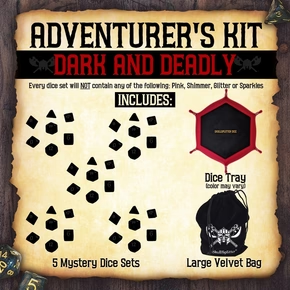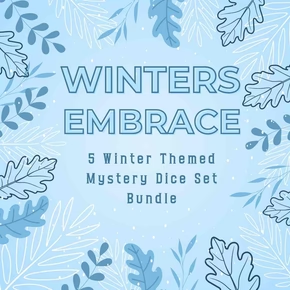
Ranger 5e Class Guide for Dungeons and Dragons
What is the best Ranger build? Stick with us and you’ll be stalking the woods and turning your foes into pincushions in no time.

Table of Contents:
What Are Rangers?
Rangers bridge the gap between a fighter and a druid. Rangers live on the fringes of civilization, acting as guides, hunters, and bastions against the dangers that lurk in the wild shadows. Where a fighter is an expert in their weaponry and fighting style, a ranger is an expert in survival and the foes they hunt. They learn the subtle signs left by their favored quarries and know just how to bring them down. Mechanically rangers have had it rough, they’re meant to be the masters of exploration and survival, but as those mechanics are often underutilized, they tend to work like inefficient fighters half the time. This has been partially rectified with the “revised ranger unearthed arcana” which you’ll need to consider when making your ranger. Read our ultimate 5E ranger guide, so you can successfully defeat enemies during a classic game of DnD.
Some of the most iconic characters that would probably be rangers in D&D include Buffy the Vampire Slayer, Aragorn from Lord of the Rings, and Daryll Dixon from The Walking Dead. Complete your character with a set of ranger dice. Browse our collection today, so you can play fully prepared!
Ranger VS. Revised Ranger?

5th edition rangers were very quickly identified as the weakest class, and by a wide margin. Eventually WotC released “revised ranger” in an “unearthed arcana”. This revised version is significantly better than the original version in practically every way, but there are a couple catches.
Firstly, since “revised ranger” is still technically unofficial, you can’t use it at the adventurers’ league and some of the more purist DMs will disallow it.
Secondly, revised ranger has its own set of archetypes called “conclaves” and the base archetypes are incompatible with revised ranger and vice versa. So, if you’re eyeballing a new ranger archetype, you’ll have to use the old classic ranger, rather than the objectively better revised version.
Generally speaking, you should always be using revised ranger if you have the option. You’ll only want to utilize the base ranger if you’re specifically wanting to use a non-revised ranger archetype. Even then, simply taking revised ranger is usually the statistically stronger choice.
Building a Better Ranger
Ranger builds are almost as diverse as fighter builds. Most builds though will fall into archery, two weapon fighting, or a classic sword and board setup. Whatever style you’re going for, you’ll need to start by figuring out your ability scores.
Ranger Ability Scores
Wisdom is the spellcasting ability for rangers, and while there are some builds that will utilize Strength, the majority of standard builds will be using Dexterity. Beyond that Constitution is usually the next highest score to keep your ranger survivable. Strength or Dexterity (whichever one you’re not using), Intelligence, and Charisma can all be treated as dump stats.
For your standard ranger using archery or most forms of two-weapon fighting, you’ll want to make Dexterity your highest ability score, followed closely by Wisdom, and then Constitution.
Ranger Races
Any race can be a ranger, but if you want to make the most optimal use of your abilities, you’ll want to maximize your Dexterity and Wisdom. The following races have a bonus to both Dexterity and Wisdom, or can choose them, making them optimal choices for a ranger character:
Aarakocra
Aarakocra gain +2 Dex and +1 Wis. This race gets banned at almost every game table, but if you have a particularly benevolent DM then take this opportunity to play a flying race with stats that perfectly align with your needs. Particularly terrifying for archery focused rangers who can deal damage while well out of danger themselves in most situations.
Elf (Wood)
Base elves gain +2 Dex and the wood elf variety also get +1 Wis. Wood elves thematically fit quite well as rangers and their buff to movement makes them rather appealing. The elf Trance ability makes them even more useful on the party watch as well.
Halfling (Ghostwise)
Ghostwise Halflings gain +2 Dex and +1 Wis. The Lucky feature is enough to justify choosing a halfling and the ghostwise variant nets you some really useful telepathy. The small size makes longbow use awkward, but I rather like this option for the two-weapon fighting build.
Human (Base or Variant)
Base humans gain +1 to each ability score and the variant human gains +1 to two abilities of your choice (and a feat). Humans once again are really always going to be the most flexible options, especially if you’re going for a build that requires a feat or two. Humans may feel a bit standard, but you should always consider them a strong option.
Kenku
Kenku gain +2 Dex and +1 Wis. Kenku abilities are somewhat lacking but the Dex and Wis still line up well for a ranger. Best suited for gloom stalker rangers that want to be sneaking around in the shadows and playing a ranger more like a rogue.
Shifter (Wildhunt)
Wildhunt Shifters gain +2 Wis and +1 Dex. Shifters get a bunch of free temporary hit points, which makes them pretty appealing if you’re going melee with your ranger. Do keep in mind though that they’re technically setting locked into Eberron and your DM may take some convincing to allow shifters elsewhere.
Ranger Archetypes / Conclaves
At 3rd level rangers gain an archetype or a “conclave” if your using revised ranger. These archetypes grant you a significant part of your classes abilities and each one represents a different theme. Make sure you select a “conclave” if you’re making a revised ranger, and an “archetype” if you’re making a basic ranger.
Conclaves
Beast Conclave
Beast conclave takes the beast master archetype and fixes it, turning your animal companion into an actual threat that will improve as you do. Overall, this is the far superior option if you’re looking for a ranger with an animal pal and mechanically between your attacks and your animal’s attacks you can dish out some real damage.
Hunter Conclave
The hunter conclave directly replaced the hunter archetype, and a lot of the abilities are still the same, especially in the early tiers. Later tiers though the conclave definitely pulls ahead as the much stronger option. Both though are the default option for direct damage dealing, consider this option if you want to focus on your DPS.
Deep Stalker Conclave
Deep stalker is the direct replacement for the gloom stalker archetype that tries to bridge the gap between ranger and rogue. As with the other conclaves, it’s a strictly better improvement and if you’re considering taking gloom stalker you should really be taking this instead.
Archetypes
Beast Master
This archetype grants you a beast pal that fights alongside you as an animal companion. However, this archetype was fully eclipsed by the beast conclave. If you’re after a furry friend, you should ditch this option and upgrade to revised ranger.
Drakewarden
Drakewarden is an “unearthed arcana” attempt to fix beast master and make it more exciting by turning your furry friend into a little dragon. Your drake familiar definitely keeps pace on damage output with the conclave version, and if you manage to reach tier 4 your dragon becomes large and you can finally become a dragon rider.
Fey Wanderer
Thematically built around fey magic, but mechanically quite similar to the hunter archetype. It exchanges a bit of damage potential in exchange for some bonus spells, proficiencies, and ways to inflict status effects. Overall, I think this “unearthed arcana” option outpaces the hunter option, and the utility you gain is more valuable than the slight damage decrease.
Gloom Stalker
Get a solid swirl of rogue mixed in with your ranger. Gloom stalker is all about hiding in the shadows and ambushes in the dark (with built in super darkvision). It’s still way weaker than its revised ranger equivalent though so I recommend passing on this for “deep stalker” which is essentially the same thing only stronger (see revised ranger).
Horizon Walker
You’re a ranger with some planar influence which gives you some fun teleportation and force damage abilities. Horizon walkers are highly mobile, with an extra punch that bypasses most resistances. If you’re not running a revised ranger, I think this is the one I’d recommend the most.
Hunter
Once the default damage dealing archetype, now outpaced and outclassed by practically every other option. Disregard this archetype and trade it in for the conclave if your goal is straight damage dealing.
Monster Slayer
This is the most DPS focused of the ranger archetypes, just get yourself some extra damage and buffs. It does fall short of “the hunter conclave” from the revised ranger, and is very similar, I recommend passing on this for the revised version if you have the option.
Swarmkeeper
This “unearthed arcana” archetype is for when a single animal friend just isn’t enough. Cover your character with a swarm of rats, bees, squid, or anything really. Mechanically it grants some bonus spells, extra damage, and some useful mobility options. However, most of the archetype is about the flavor rather than the utility, how can you say no to a writhing swarm of doom?
Ranger Protection

How can a ranger protect his friends and buff them up? Everyone knows rangers are great at combat, but can they stand back and help others as well?
The answer is that rangers are very good at spellcasting and have a lot of options to help their allies. Cast Jump on your friend to triple his jump distance for the next 60 seconds, then follow it up with Longstrider to make his speed increase by 10ft. for the next hour. If he becomes injured and is within touch distance, get him back into shape with Cure Wounds.
Do you fear your party is running into a trap? Cast Detect Poison and Disease and scan the area around you. It just may save all your lives.
And if you’ve taken on a challenge too tough to handle, Fog Cloud is your spell of choice. It will mask your getaway and let you live to fight another day.
Rangers in Combat
While protecting your friends can be fun, the real thrill of being a ranger is in directly fighting the enemy. Rangers are tough. They can take a lot of damage without dying, so they excel at melee combat. Rangers are also proficient with bows, making them excellent ranged attackers.
At level 1, cast Hunter’s Mark to mark a single target. For the next hour, you do an extra 1d6 damage to this target every time you hit it with a melee weapon. If you lose sight of the target, you gain advantage on any perception or survival check needed to find it.
At level 2, choose the Archery fighting style if you want to hunt with a bow. If you’d rather meet your opponent face-to-face, choose two-weapon fighting or dueling. If you choose two-weapon fighting, make sure you get the dual wielder feat to go along with it.
At level 3, choose to be either a Hunter Ranger or Beast Master Ranger. If you choose Hunter, take the horde breaker feature to get extra attacks. Colossus Slayer is another option, but it doesn’t scale as well over time.
If you choose Beast Master, you’ll get Ranger’s Companion. Here are a few great options for your companion:
- Flying snake - Does flying poison attacks on your enemies. If the bite doesn’t kill them, the poison eventually will
- Giant poisonous snake - Does great damage, can be mounted by small party members such as gnomes and halflings, and can swim
- Giant wolf spider - Its bite really stings, and it can climb walls and ceilings. This pet is even more useful if a mage in your party knows the “web” spell
Kill your enemies with a bow, a weapon, two weapons, or with a snarling beast pet. Regardless of how you do it, just kill them. After all, you’re a ranger. This is what you were born to do.
Ranger Utility
Rangers are useful members of a party even when they are not in combat. Your Natural Explorer ability will help prevent your party from slowing down due to bad terrain and will get you twice as much food while foraging.
Use the Stealth skill to sneak past bad guys and spy on them, Perception to find clues, and Insight to determine the true intentions of NPCs you confront along the way.
Ranger abilities, armor, and weapons

Your melee and ranged attacks will depend on Dex, and Dex will also help with AC and Initiative. Put your highest roll into this.
All of your spells will use wisdom, so take your second or third highest roll and put it into your Wis. If you plan on being up in your enemy’s face a lot, Con may be even more important than Wis. After all, you can’t cast spells if your hit points go to zero.
Intelligence and charisma are not very useful to a ranger. Put your worst rolls into these stats.
Rangers can wear light or medium armor. But half-plate, scale mail, or padded leather will give a disadvantage to stealth, so stay away from these. If your Dex is above 19, wear studded leather. If your Dex is 19 -18 or below, wear breastplate or a chain shirt if you're not planning on sneaking around, or studded leather if you're planning to be stealthy.
For weapons, use a bow, swords, axes, or pretty much anything you want.
How to Play a Ranger
There are multiple ways to roleplay a ranger. Maybe you are a lone frontiersman who grew up on the fringes of a nearby Kingdom. Or perhaps you grew up in the city, but the death of a loved one (or some other traumatic event) caused you to leave it all behind.
Maybe you are a part of a larger organization devoted to protecting civilization (think Watchers of the Wall from Game of Thrones). Yet another option is to think of your character as part of an elite, advanced military force that travels deep into enemy territory, where the “enemy” is the massive forces of undead, demons, orcs, and other terrors that lurk where others are afraid to tread.
The bottom line is that there are many different types of rangers. But all of them are united by a belief in defending the world against the monsters out there, in the wilderness. So get your weapons ready, and join the fight.
We’ve gone over how to protect your allies and fight as a ranger, as well as how a ranger can help the party in non-combat situations. We’ve also given tips on abilities, armor, weapons, and roleplaying for rangers.
If you’ve enjoyed this article, please share it with your friends. And give us feedback in the comments below. How do you play your ranger? Do you use the same skills and spells that we do? Or do you have a different twist on the class?
Optional Ranger Features
In Tasha’s Cauldron of Everything every class got a set of optional features that act like a sort of upgrade patch to fix issues and improve things that needed improving. Rangers feel almost like they got a full redesign more than just a patch. These features are technically optional, but assuming your DM allows them, make sure to include these class features with your new ranger:
Deft Explorer
The old natural explorer feature was situational, and usually only served to nerf the ranger when they were out of their own element. Now deft explorer is taking its place, which is less flavorful but WAY less situational. You get features at 1st, 6th, and 10th levels.
At 1st level you simply gain expertise (double proficiency bonus) in one of your skills, and you get to pick out two bonus languages.
At 6th level you get a 5-foot boost to your movement speed, and a climb and swim speed equal to your new walking speed.
At 10th level you get to gain temporary hit points as an action equal to 1d8 + your Wisdom modifier a number of times equal to your proficiency bonus. And as a bonus, you remove a level of exhaustion at every short rest now!
This all together makes rangers the kings of the survival campaign (as they always should have been) and generally makes your ranger far more mobile and survivable.
Favored Foe
The old favored enemy feature was wonky, and only granted benefits if you were lucky enough to have selected the same enemy type that your DM has decided to throw your way. Now favored foe is taking its place by more or less turning the spell hunter’s mark into a class feature. Hunter’s Mark has always been an essential ranger spell, and now without a spell slot you get to apply it for free once you’ve hit an enemy. This new version starts off weaker, matches the old spell at 6th level, then surpasses it at 14th. Remember that this extra damage applies on the attack that makes the mark as well!
New Spells
Using the optional features, the following spells have been added to the ranger spell list:
1st Level
Entangle
Searing smite
2nd Level
Aid
Enhance ability
Gust of wind
Magic weapon
Summon beast
3rd Level
Elemental weapon
Meld into stone
Revivify
Summon fey
4th Level
Dominate beast
Summon elemental
5th Level
Greater restoration
Fighting Style Options
Just like the fighter, rangers get an expanded fighting style list that can dramatically change how they play. You now get to choose from the following in addition to the original list:
- Blind Fighting. Identical to the fighter version, this gives you straight up blindsight if the enemy is close enough. Ranger doesn’t have a clean way to cast darkness or other obscuring effect, but if you or an ally can manage it then stealthy stabby ranger goodness awaits.
- Druidic Warrior. This lets you dip your ranger’s toes into druid with your choice of any 2 druid cantrips. I recommend mold earth for some absolutely game breaking applications, and if you want to run a high Wisdom ranger the cantrip primal savagery can be a surprisingly effective damage dealer.
- Thrown Weapon Fighter. Throwing axes was already a niche but viable build for rangers, now it threatens to have one of the highest damage potentials. Grab a ton of hand axes and consider taking the slasher feat to slow your enemies down as you hurl axes at them.
Spellcasting Focus
More of just a patch than anything else, every other spellcaster either uses a component pouch or a spellcasting focus. Rangers just sort of, didn’t. Now rangers can pick a flavorful spellcasting focus of their very own.
Primal Awareness
The old primeval awareness was dubiously useful, but it detected if certain creature types were within a few miles of you. This new primal awareness replaces it with a bunch of normal detection spells and talking to creature spells. This new feature has a lot less flavor but man it’s way more useful. Take advantage of this retinue of utility spells and save your actual ranger spells for damage dealing.
Martial Versatility
Just like the fighter, rangers can now trade out their fighting style for a new one whenever they gain an ability score increase level. Shouldn’t come up often, but it’s way smoother and easier than the old painful retraining rules.
Nature’s Veil
The old feature hide in plain sight was very flavorful but was functionally useless, which is especially disappointing as a 10th level feature. The new nature’s veil lets you ACTUALLY turn invisible for a turn, and you get a number of uses of it equal to your proficiency modifier. This is an amazing buff that’ll let you disappear whenever you need to.
**Xanathar's Class Updates**
Gloom Stalker (Xanathar’s Guide to Everything)
Get a solid swirl of rogue mixed in with your ranger. Gloom stalker is all about hiding in the shadows and ambushes in the dark (with built in super darkvision). It’s still way weaker than its revised ranger equivalent though so I recommend passing on this for “deep stalker” which is essentially the same thing only stronger (see revised ranger).
Horizon Walker (Xanathar’s Guide to Everything)
You’re a ranger with some planar influence which gives you some fun teleportation and force damage abilities. Horizon walkers are highly mobile, with an extra punch that bypasses most resistances. If you’re not running a revised ranger, I think this is the one I’d recommend the most.
Monster Slayer (Xanathar’s Guide to Everything)
This is the most DPS focused of the ranger archetypes, just get yourself some extra damage and buffs. It does fall short of “the hunter conclave” from the revised ranger, and is very similar, I recommend passing on this for revised version if you have the option.
👉CLICK HERE TO SHOP RANGER DICE STYLES!
👉 SHOP RANGER MINIATURES HERE!
--
Enjoy this Guide? You May Also Like:
Want to multiclass your ranger? Check out our 5e Ranger Multiclass Guide
Thinking about other classes? Check out our other Class Guides for Necromancers and Bards!
Check out our polyhedral dice in our store!
New to find a D&D Group? Check out our guide on How to Find a D&D Group.
New to D&D? Check out our Beginner's Guide to D&D
Want to play a vampire in D&D? Check out our Dhampir 5e guide!
Thinking of multiclassing with a ranger and don’t know what to multiclass into? Check out our 5e Ranger Multiclass Guide!
Like this Guide? then Share, Tweet or Pin it Now!


Disclaimer
Last updated: January 27, 2019
The information contained on www.SkullSplitterDice.com website (the "Service") is for general information purposes only.
www.SkullSplitterDice.com is a participant in the Amazon Services LLC Associates Program, an affiliate advertising program designed to provide a means for sites to earn advertising fees by advertising and linking to Amazon.com. (source: Section 5)
Blueshift Nine, LLC assumes no responsibility for errors or omissions in the contents on the Service.
In no event shall Blueshift Nine, LLC be liable for any special, direct, indirect, consequential, or incidental damages or any damages whatsoever, whether in an action of contract, negligence or other tort, arising out of or in connection with the use of the Service or the contents of the Service. Blueshift Nine, LLC reserves the right to make additions, deletions, or modification to the contents on the Service at any time without prior notice.
Blueshift Nine, LLC does not warrant that the Service is free of viruses or other harmful components.
Affiliate disclaimer
This affiliate disclosure details the affiliate relationships of Blueshift Nine, LLC with other companies and products.
Some of the links are "affiliate links", a link with a special tracking code. This means if you click on an affiliate link and purchase the item, we will receive an affiliate commission.
The price of the item is the same whether it is an affiliate link or not. Regardless, we only recommend products or services we believe will add value to our readers.
By using the affiliate links, you are helping support the Service, and we genuinely appreciate your support.
Affiliate advertising programs that the Service uses are:
- Amazon Services LLC Associates Program
- As an Amazon Associate, I earn from qualifying purchases.
- Blueshift Nine, LLC is a participant in the Amazon Services LLC Associates Program, an affiliate advertising program designed to provide a means for sites to earn advertising fees by advertising and linking to Amazon.com or endless.com, MYHABIT.com, SmallParts.com, or AmazonWireless.com.
- Pages on this Service may include affiliate links to Amazon and its affiliate sites on which the owner of this Service, Blueshift Nine, LLC, will make a referral commission.
